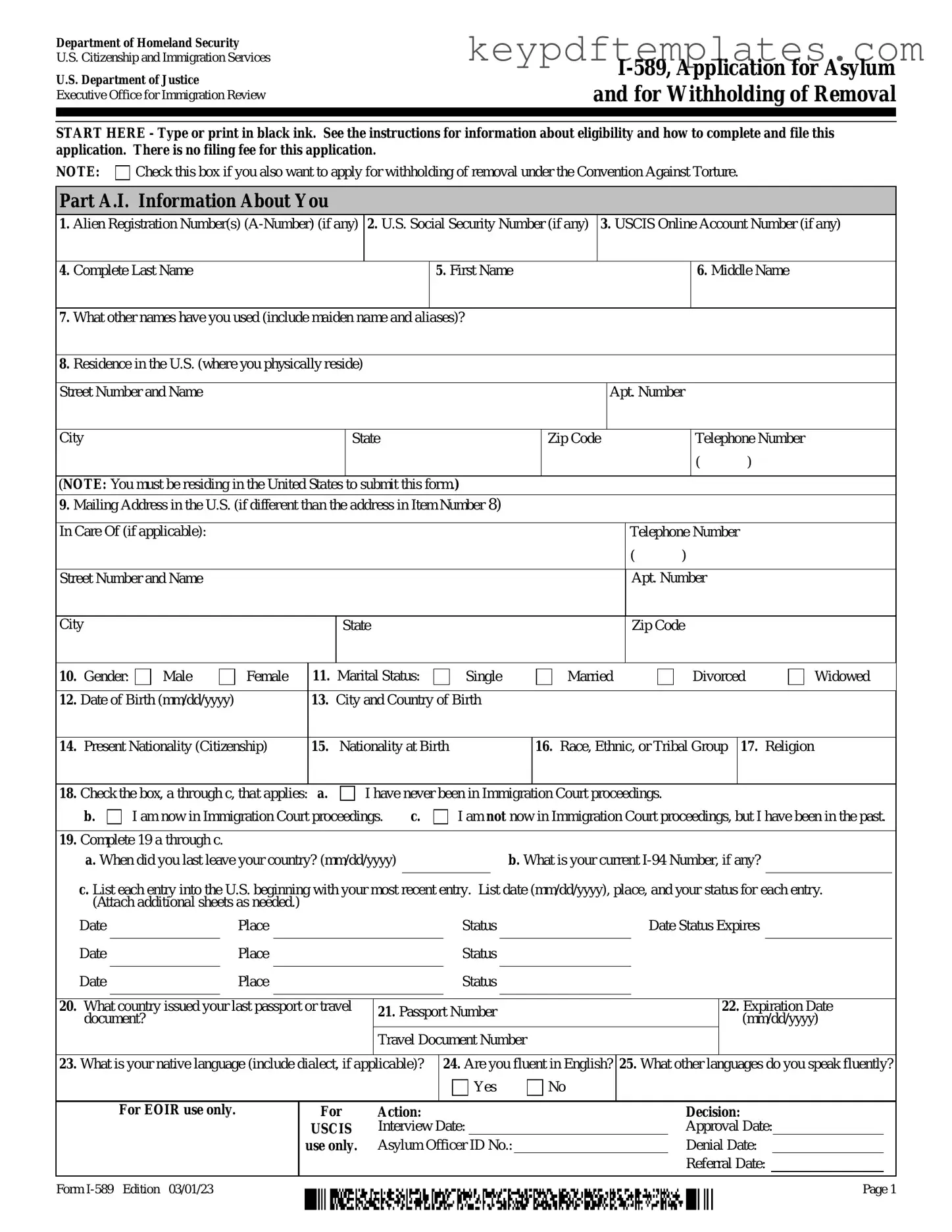Get USCIS I-589 Form
The USCIS I-589 form is a crucial document used by individuals seeking asylum in the United States. This form allows applicants to formally request protection based on a well-founded fear of persecution in their home country. Completing the I-589 accurately is essential for those hoping to navigate the asylum process successfully.
Modify Document Online
